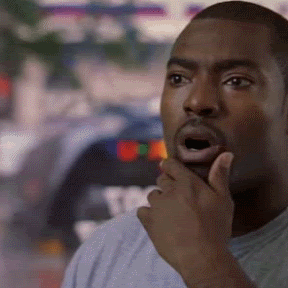LAST JULY, in her New York office, a financial planner by the exquisitely apt name of Jennifer Prosperino received her weekly call from a longtime client. He was a semiretired man in Florida who'd grown up evading gunfire in the South Bronx, where he'd lived in firetrap apartment buildings with junkies in the hallways. He slept with a baseball bat in his bed, dreaming of a better life. His first question for Prosperino was the one he always asked: "Am I going to be okay?"
Days earlier, the client, employed part time by his former union, had received a check from the New York Mets for $1,193,248.20 -- the first of 25 annual, identical payments he is guaranteed from a club he last played for in 1999. That means Bobby Bonilla, 49, will make more money than 17 players on the Mets' Opening Day roster.
For years, we have been talking about Mets owner Fred Wilpon and his doomed investments with Bernie Madoff. And the payments to Bonilla, whom Wilpon once made the highest-paid player in baseball, stand as a legacy of that relationship, the repercussions of which continue to resonate in Flushing: This year's team slashed $43.4 million off last year's Opening Day payroll, which is believed to be the largest one-year salary drop in MLB history.
But don't blame Bonilla for the Mets' mess. Even before he began collecting these payments, the former All-Star embraced the responsibility of being, in his words, "the CEO of my own cash." From the day he signed his first contract, Bonilla followed the gospel preached by his then-agent, Dennis Gilbert: "It's not what you make, it's what you keep."
"Bobby didn't need to live large," Gilbert says. "He looked around and saw lots of people he knew coming out of the game with no money, and he didn't want to be like that."
The anxiety that lurked behind Bonilla's question for Prosperino that July day was a vestige of his youth -- a lighthearted way of asking whether everything is under control. "Yes, Bobby," Prosperino said. "Everything's okay." That's what she always says; the two talk and text about Bonilla's finances so regularly that neither can remember specific conversations. "Not once has it been, 'Hey, I'm going to Vegas,'" Prosperino says. "Bobby's disciplined. He doesn't change the plan once the money gets there."
Bonilla's plan is looking pretty good these days. His daughter is finishing up at the Sorbonne. His son plays baseball at Arizona State. He's living comfortably in a paid-for house, driving a secondhand Chevy Silverado. He has a part-time job he loves, educating current players about their benefits, about how to manage the mundane details of a fiscal life and drive the devil from it. They have millions of reasons to listen to him.
If only the Mets had been so vigilant.
In 1986, a year after team president Fred Wilpon opened his first account with Madoff, the Mets won the World Series with a nucleus (Doc Gooden, Darryl Strawberry, Gary Carter, Keith Hernandez) that seemed destined to win many more. It was the same year Bonilla joined fellow Pirates rookie Barry Bonds as the rising stars of a young, promising team.
Over the next five years, the Mets became the Dynasty That Never Was. They made the postseason once, the World Series never and dissolved into a haze of cocaine, acrimony and bad fielding. Meanwhile, Bonilla blossomed. A barrel-chested kid with a big smile, he made four All-Star teams in that span and finished second in the MVP voting in 1990 and third in 1991. Both seasons, Pittsburgh won the NL East.
Before the 1992 season, Wilpon hired a new GM and a new manager and opened his checkbook to sign free agents like Eddie Murray and Bonilla, whose five-year, $29 million deal made him the game's highest-paid player. The spree was enabled by investment income from a host of Madoff accounts. Wilpon and his associates told all their investors that these accounts typically provided returns of about 18%. The team put liquid assets into such accounts and paid its bills with the apparent proceeds.
The '92 Mets took the field with 11 millionaires; they finished 24 games out. By the time players went on strike in 1994, all anyone could talk about -- especially in Flushing, where fans loathed Bonilla and his megadeal -- was how money had ravaged baseball. By 1997, Bonilla had a new four-year, $23.3 million deal in Florida, where he won a World Series. But without the Mets' Madoff money to cover a payroll they couldn't really afford, the Marlins dismantled their title team. By 1999, Bonilla -- 35 and his career winding down -- ended up back with the Mets.
It was an unhappy reunion. Bonilla couldn't get regular at-bats or do much with the ones he got, hitting just .160 and spending months on the DL. In the final game of the NLCS, having already appeared as a pinch-hitter, he and Rickey Henderson played cards in the clubhouse while their teammates lost in extra innings -- an unfortunate incident that helped trigger Bonilla's last, now infamous deal.
Bonilla, active in the MLB Players Association, was concerned that a work stoppage was looming in 2001 and knew the Mets wanted to dump the final year of his contract, worth $5.9 million, to free up a roster spot. So with the futures of a daughter and son to consider too, he realized this was his chance to set aside a chunk of money. "I decided I wanted to live the rest of my life as if I were an active player," he says.
Gilbert and Bonilla did their homework and went to the team with different buyout options, and the sides agreed on a 25-year, $29.8 million deferred payment plan.
Gilbert was so shocked at his success, he immediately tried to get the same deal for other clients, most of whom (Jose Canseco among them) lacked Bonilla's long view and passed. "People kept asking me, 'Why didn't the Mets just release him?'" says agent Dan Horwits, who negotiated the particulars of the deal. "I'm not sure I even knew at the time."
Only years later would it become clear why Wilpon went for the deferral: The $5.9 million went into a Madoff account, which was theoretically supposed to collect a double-digit interest rate over the life of the agreement. Only about an 8 percent return would have been needed to pay Bonilla his $1.2 million a year from 2011 to 2035. The Mets did the math and figured they'd be able to turn a $60-70 million profit on the arrangement.
Of course, we know what happened next. Not quite three years before the payments were to start, Madoff's Ponzi scheme blew sky-high. Wilpon's investments were gone, as was much of his income. Seduced by the prospect of turning a $5.9 million debt into 10 times as much free money, the Mets didn't have a dime set aside for the $29,831,205 they'd guaranteed Bonilla. In fact, without an emergency loan procured from MLB, they might not have been able to make the first payment.
The Mets reportedly hemorrhaged $70 million last season, prompting the team to shed payroll. For much of the past decade, the team had ranked among MLB's five highest-paying teams, sometimes second only to the Yankees. The offseason purge, like sailors discarding ballast, puts them at No. 14, between the Twins and Cubs -- and 60 percent of their money goes straight to three players: Johan Santana, Jason Bay and David Wright. While the Mets will likely make re-signing Wright, the face of the franchise, a priority, it's possible the entire trio could be off the books by 2013.
Meanwhile, attendance has fallen in each season at Citi Field since it opened in 2009. Which means Wilpon is watching every dime -- and the annual check to Bonilla will serve as a reminder of what can go wrong if he doesn't. 








